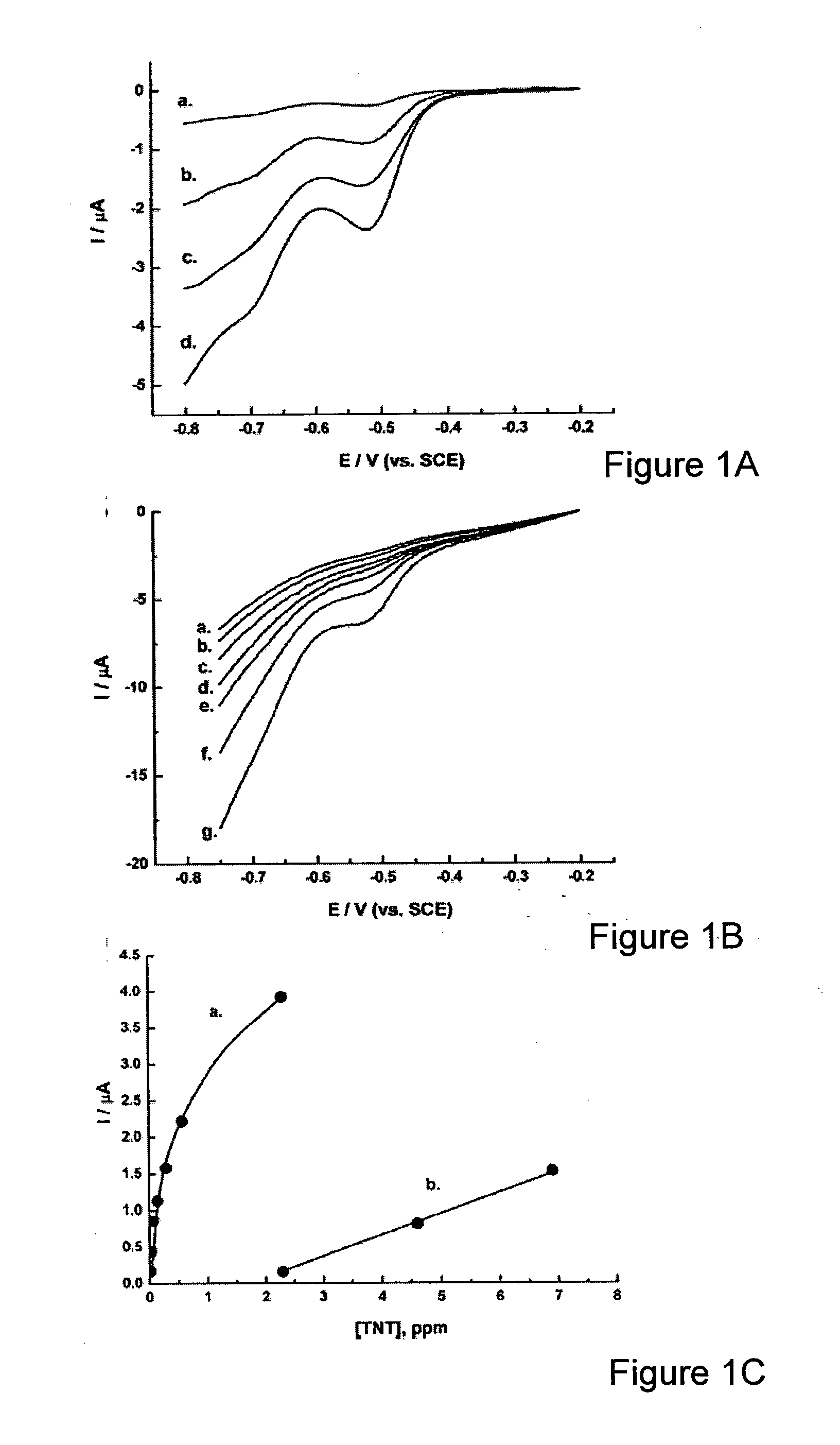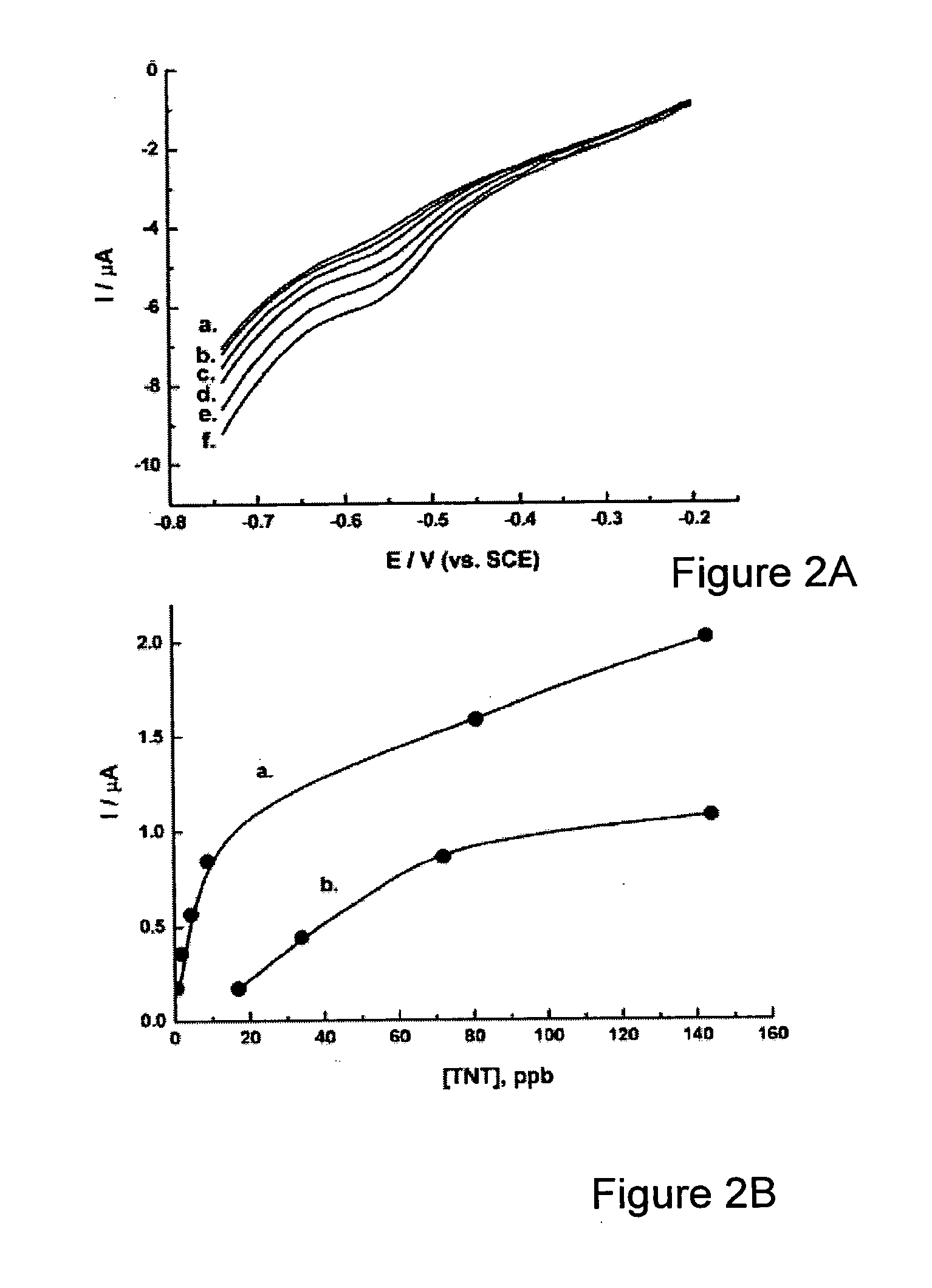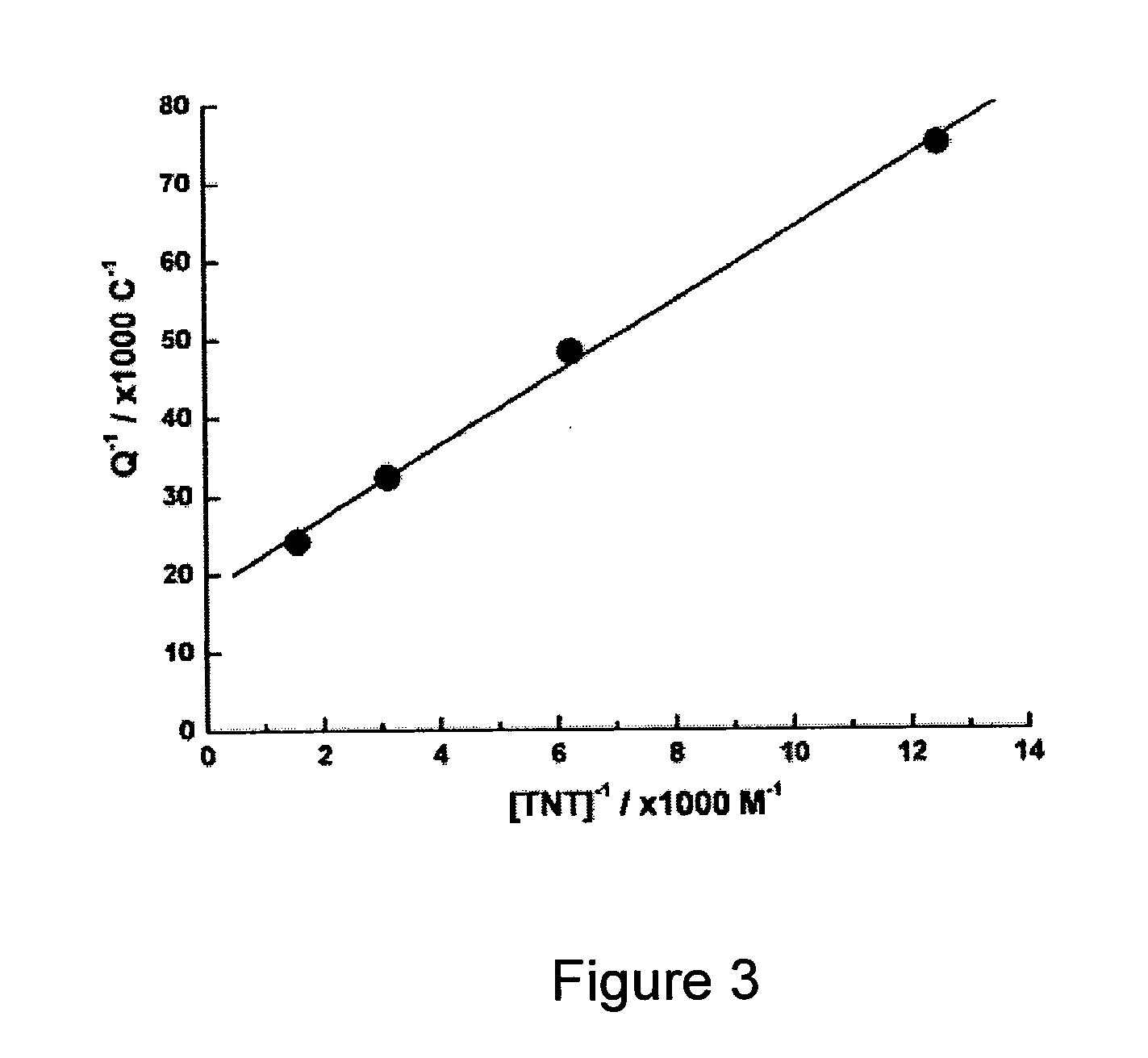Detection of trinitrotoluene
a trinitrotoluene and detection method technology, applied in the direction of instruments, material analysis, nanosensors, etc., can solve the problems of insufficient sensitivity of different analytical protocols, lack of specificity, long analysis time intervals, etc., and achieve the effect of enhancing the sensitivity of analysis
- Summary
- Abstract
- Description
- Claims
- Application Information
AI Technical Summary
Benefits of technology
Problems solved by technology
Method used
Image
Examples
Embodiment Construction
[0103]Electrochemical sensors for the analysis of TNT with enhanced sensitivities are herein disclosed. The enhanced sensitivities are achieved by tailoring π-donor-acceptor interactions between TNT and π-donor modified electrodes or π-donor-cross-linked Au nanoparticles linked to the electrode. In one configuration a p-aminothiophenolate monolayer-modified electrode leads to the analysis of TNT with a sensitivity corresponding to 17 ppb (74 nM). In the second configuration, the cross-linking of Au NPs by oligothioaniline bridges to the electrode yields a functionalized electrode that detects TNT with a sensitivity that corresponds to 460 ppt (2 nM). Most impressively, the imprinting of molecular TNT recognition sites into the π-donor oligoaniline-cross-linked Au nanoparticles yields a functionalized electrode with a sensitivity that corresponds to 46 ppt (200 pM). The electrode reveals high selectivity, reusability, and stability.
Nanoparticles Synthesis
[0104]Gold nanoparticles func...
PUM
 Login to View More
Login to View More Abstract
Description
Claims
Application Information
 Login to View More
Login to View More - R&D
- Intellectual Property
- Life Sciences
- Materials
- Tech Scout
- Unparalleled Data Quality
- Higher Quality Content
- 60% Fewer Hallucinations
Browse by: Latest US Patents, China's latest patents, Technical Efficacy Thesaurus, Application Domain, Technology Topic, Popular Technical Reports.
© 2025 PatSnap. All rights reserved.Legal|Privacy policy|Modern Slavery Act Transparency Statement|Sitemap|About US| Contact US: help@patsnap.com



